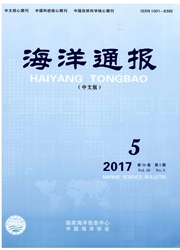

 中文摘要:
中文摘要:
本实验以太平洋牡蛎稚贝(Crassostrea gigas,-0.2cm)为对象,研究了HDTMA有机改性粘土和PAC无机改性粘土絮凝法治理赤潮时对海洋底栖生物的影响。96h急性毒性实验中二者对牡蛎稚贝的半致死浓度(LC50)分别为4.62g/L和2.67g/t,。在能够有效去除赤潮微藻的浓度条件下(0.10g/L),经慢性毒性实验发现改性粘土对牡蛎稚贝成活率无影响,牡蛎生长速度较对照组没有明显差异,滤食率比培养实验初始时升高了3~4倍,同时在牡蛎超微组织结构中未发现机械损伤。通过模拟改性粘土去除赤潮生物(Heterosigma akashiwo和Prorocentrum donghaiense)过程中对生物体的影响,发现改性粘土絮凝法通过去除赤潮藻能显著提高牡蛎的存活率,所以HDTMA有机改性粘土和PAC无机改性粘土絮凝法在赤潮生物防控中可以作为一项有效的应急措施。
 英文摘要:
英文摘要:
In this study infant oyster ( Crassostrea gigas, -0.2cm ) was examined as experiment object to investigate the potential environmental influences on the benthic organism of HDTMA organic modified clays and PAC inorganic modified clay. The 96 h acute tests revealed the LC50 of organic and inorganic modified clay are 4.62 g/L and 2.67 g/L separately. In the concentration of 0.1 g/L, which has a high efficiency to remove harmful algae cells, the chronic test showed modified clays have no obvious toxicity on C. gigas survival percentages, and growth rates in modified clays were almost the same as those of control in the chronic test. Filtering rates increased 3-4 times than at the beginning of the culture. Both clays were never found to have negative effects on the gill and digestive gland super microstructure of infant C. gigas yet. During the clay flocculation used for algae bloom control, such as the Heterosigma akashiwo and Prorocentrum donghaiense, C. gigas survial suggested clay flocculation methods would increase infant C. gigas survival rate apparently due to the control algae plankton livability, growth and production. Therefore, HDTMA organic modified clays and PAC inorganic modified clay flocculation have prospective future as an emergent measure in controlling harmful algal blooms as emergency methods.
 同期刊论文项目
同期刊论文项目
 同项目期刊论文
同项目期刊论文
 期刊信息
期刊信息
